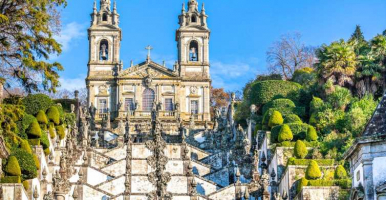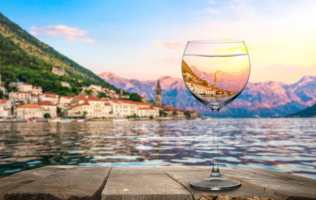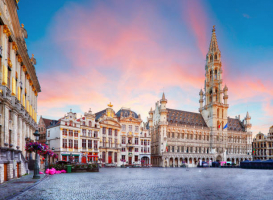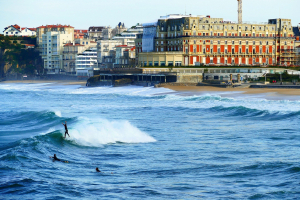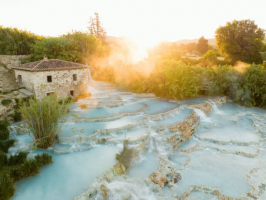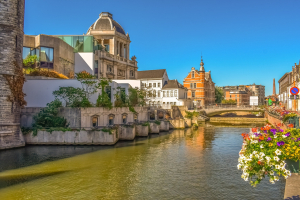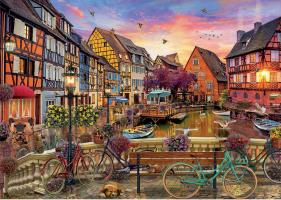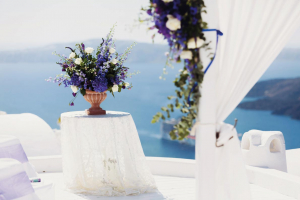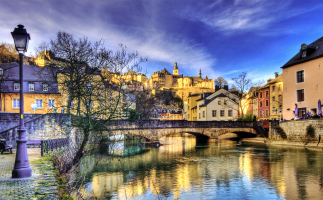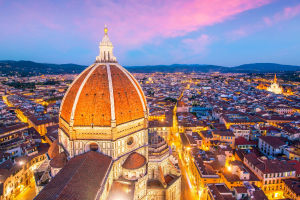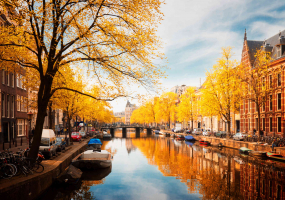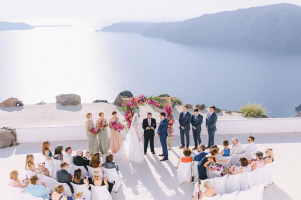Top 14 Best Art Nouveau Destinations in Europe
During the beginning of the 20th century, everything from jewelry to architecture was dominated by the curvilinear, nature-inspired Art Nouveau style. The ... read more...destruction of Art Nouveau buildings has been relentless throughout the past century. However, there are still many beautiful places following this school. Some of the best Art Nouveau destinations in Europe are featured below.
-
Northern Italy's Turin is home to a significant metropolis and commercial and cultural hub. The city was formerly a significant political hub in Europe. The city is renowned for its numerous art galleries, eateries, churches, palaces, opera houses, piazzas, parks, gardens, theaters, libraries, museums, and other establishments. It also has a rich cultural and historical background. It deserves to be one of the best art nouveau destinations in Europe. The 16th and 18th centuries saw the construction of many of Turin's public squares, castles, gardens, and opulent palazzi, including the Palazzo Madama. The residences of the Royal House of Savoy, a section of Turin's historical center, are included as a World Heritage Site.
The art nouveau style's heyday, which was characterized by a vision of speed and fluid movement, occurred at the same time as the Italian automobile industry was beginning to take off. Production for Fiat (1899) and Lancia (1906) began in Turin's back alleys.
The original blue-floral logo for Fiat and the whiplash (distinctive curves), swirling letters on Lancia were emblematic of the movement's appreciation for dynamism. As Turin hosted an international exhibition of decorative arts in 1902, the city became the undisputed capital of the art nouveau movement, which the Italians dubbed Stile Liberty. Visit the first Fiat factory on Corso Dante, then travel to Borgo Po to see some Stile Liberty homes, including Casa Fenoglio-Lafleur and Villa Scott, both designed by Pietro Fenoglio in 1902.
Location: Piedmont region, Northern Italy
Video by Solo Walker on Youtube 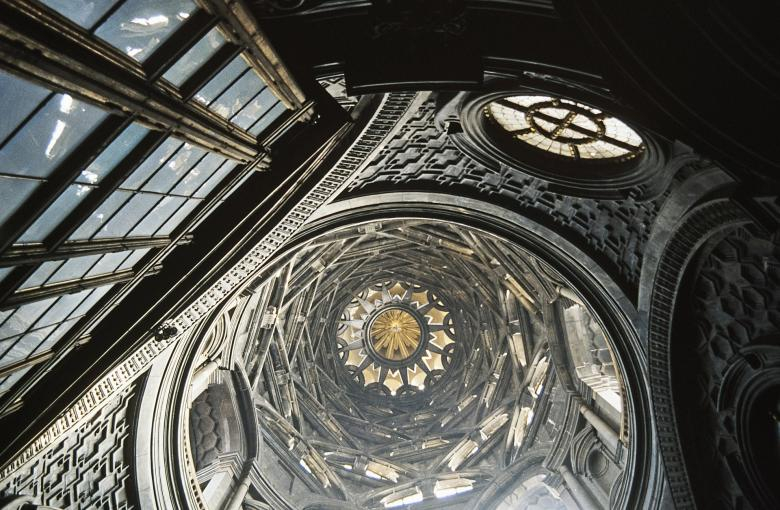
Photo by Pixabay on Stockvault.net (https://www.stockvault.net/photo/220080/turin-italy) -
The largest and capital city of the Czech Republic is Prague, which was formerly known as Bohemia. With a lengthy history and Romanesque, Gothic, Renaissance, and Baroque architectural styles, it serves as the political, cultural, and economic center of central Europe. Many of the well-known cultural landmarks in Prague have survived the bloodshed and devastation of 20th-century Europe.
Alphonse Mucha is largely responsible for Prague's reputation as an art nouveau city. Strangely, he didn't even step foot in his native Czech Republic until the fashion was in decline. Mucha's sarcastic artwork catapulted him (reluctantly) to the head of the movement and was used to promote cigarette papers, champagne, and Sarah Bernhardt shows. During Mucha's absence in Paris and the US, architects Ohmann, Bendelmayer, and Dryák were tasked with promoting Prague's art nouveau. They did this by combining neo-baroque styling with more traditional flower themes and looping metalwork. The Hotel Central (rooms starting at €125 per night), one of the city's original art nouveau structures, is still in use. The Municipal House is adorned in symbolist murals, the Kaunicky Palace is home to a museum dedicated to Mucha, and he produced a number of colossal paintings about the Slavs at the nearby Zbiroh castle.
Location: Czech Republic
Video by ALL in 4K on Youtube 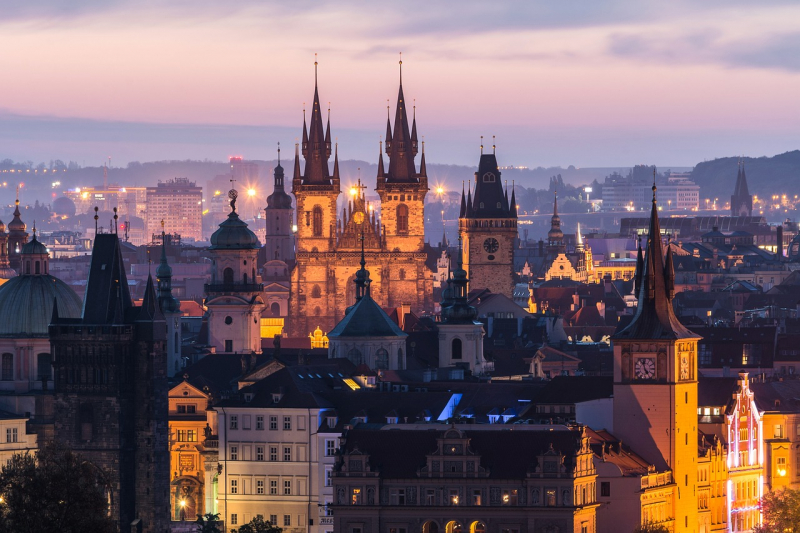
Photo by Dropolto on Pixabay -
A major metropolis on the international stage, Budapest excels in business, banking, media, the arts, fashion, research, technology, education, and entertainment. Budapest's history began when a prehistoric Celtic hamlet developed into Aquincum, the Lower Pannonia's Roman capital.
Budapest's interpretation of art nouveau diverged slightly from the trends seen in other European cities. As a tribute to the Asian heritage of the Magyar people, dön Lechner, widely regarded as the best of the period's Hungarian builders, adapted oriental elements, incorporating delicate floral imagery and lacquered finishes to his minarets (using local tiles). His Post Office Savings Bank's ceiling has the appearance of a Persian textile. The Török bank and school on Dob Utca, as well as Lechner's Institute of Geology, are examples of how the sinuous early art nouveau and Hungarian national romantic traditions were combined. The Bedö Ház, a Szecesszió museum with a coffee shop on the ground floor, hosts celebrations for it. Stay at the Hotel Gresham Palace, one of the largest art nouveau structures in the world with 179 beds and accommodations starting at €330 per night. It is named after the founder of London's Royal Exchange.
Location: Hungary
Video by Four Seasons Hotels and Resorts on Youtube 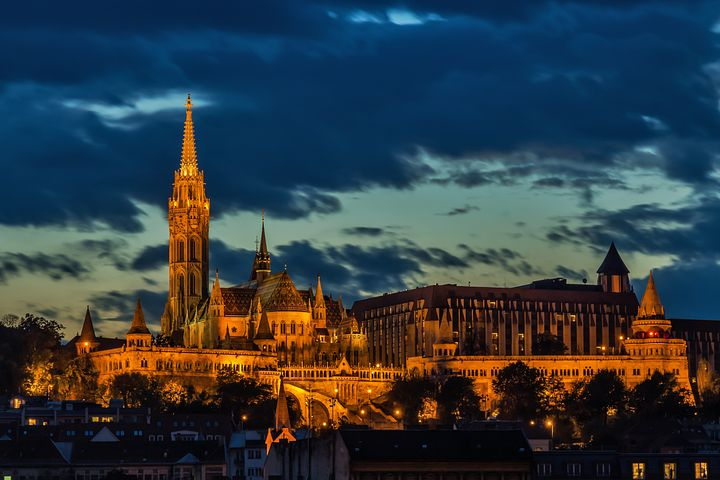
Photo by Bergadder on Pixabay -
Ålesund, Norway is renowned as one of the world's top tourist sites for Art Nouveau buildings. While they were all rebuilt at the same time after a significant fire destroyed the majority of Ålesund's city center in 1904, the majority of the structures in its historic center are designed in the Art Nouveau style. This necessitated the simultaneous total reconstruction of a sizable portion of the city. Art Nouveau was the preeminent style employed during the rebuilding process because it was popular during this time. This gives the architecture a lovely unity and makes the buildings merge together perfectly, giving it a storybook appearance.
One of the most well-liked activities in Ålesund is strolling through the city center to take in the Art Nouveau architecture. Visitors can also sign up for guided tours, which are a terrific way to learn about the background of various locations and the characteristics of Art Nouveau. One of the best places to take in Art Nouveau architecture is at the pedestrian-friendly Kongens Gate neighborhood, where several outstanding specimens can be found. To see some of the structures brilliantly reflected in the typically tranquil waterways, stroll down Notenesgata street.
Location: Norway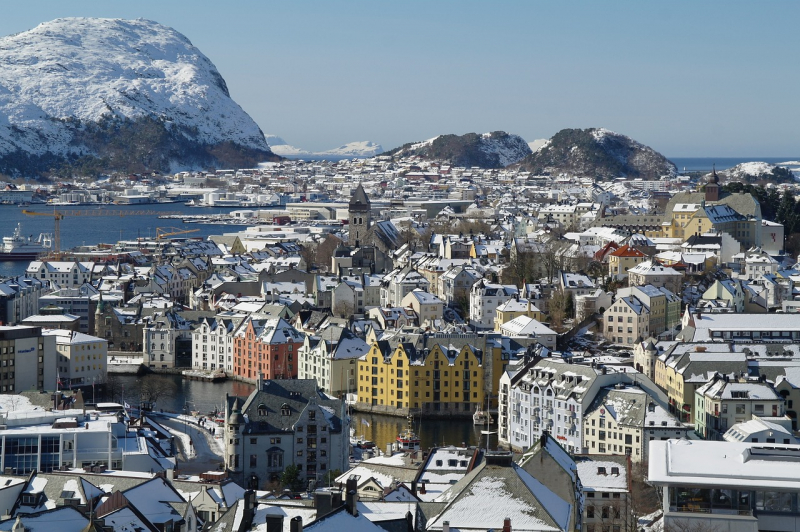
Photo by Baader1 on Pixabay Video by Piotur on Youtube -
Darmstadt is a mid-sized city located in central Germany. It’s known as a student city and is not only famous for its scientific research institutions but also its unique style of Art Nouveau or Jugendstil architecture. There are several impressive buildings around the city. One of the most notable is the Jugendstil Bath. This is a public indoor swimming pool that is more than 100 years old. Its buildings have significant elements of Art Noveau and are known for their beauty and unique style. The main swimming hall is especially beautiful with its balconies overlooking the pool and the large windows.
The Wedding Tower or Hochzeitsturm is often considered the most famous landmark in Darmstadt. Grand Duke Ernst Ludwig and Princess Eleonore were married in 1905, and this monument was built in 1908 to honor their union. It features a distinctive roof with rounded arches that is visible from all throughout Darmstadt. The tower is naturally a favorite place for wedding photos and parties as it is bordered by a lovely park. The public is welcome to use the tower's viewing deck.
Even though Darmstadt is home to the two most well-known Art Nouveau structures, there are a ton of lesser-known structures all across the city, making it the ideal site to go exploring.Location: Germany
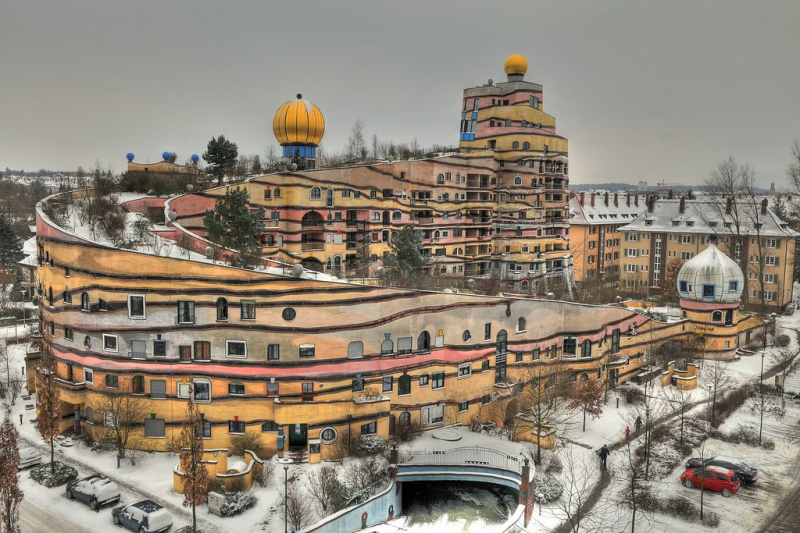
Photo by Joachim S. Müller on Flickr (https://www.flickr.com/photos/joachim_s_mueller/4271186510) Video by Travel Wonder on Youtube -
The classic Art Nouveau buildings you'll discover in Ljubljana are at least as spectacular as the city's structures, which were mostly created by the renowned Slovenian architect Joe Plenik. The majority of Ljubljana's Art Nouveau structures are located in the small city center, making it possible to see them all in a single day because they are all accessible by foot.
Let's begin with Vurnik House, the most well-known and frequently photographed edifice in Ljubljana. The distinctive front of this remarkable structure is instantly identifiable thanks to its geometric patterns painted in vivid red, blue, yellow, and white. The People's Loan Bank, with its blue and white exterior and Secession-style statuary on the roof, is situated right next to it. The Grand Union Hotel is located across the street, and you can be sure that it is grand on the inside as well as the appearance.
Continue walking until you reach Preeren Plaza, which is filled with Art Nouveau buildings and is near to the Ljubljanica River. Here, you should make sure to visit the grand staircase in the Galerija Emporium. Then, continuing east down the river, you arrive to the well-known Dragon Bridge, which, as its name suggests, is decorated with statues of dragons and is frequently regarded as the Vienna Secession's most beautiful bridge.Although Ljubljana's city center is relatively tiny, it is teeming with exquisite Art Nouveau structures that are sure to thrill any fan of art or architecture.
Location: Slovenia
Video by Cities in 4K 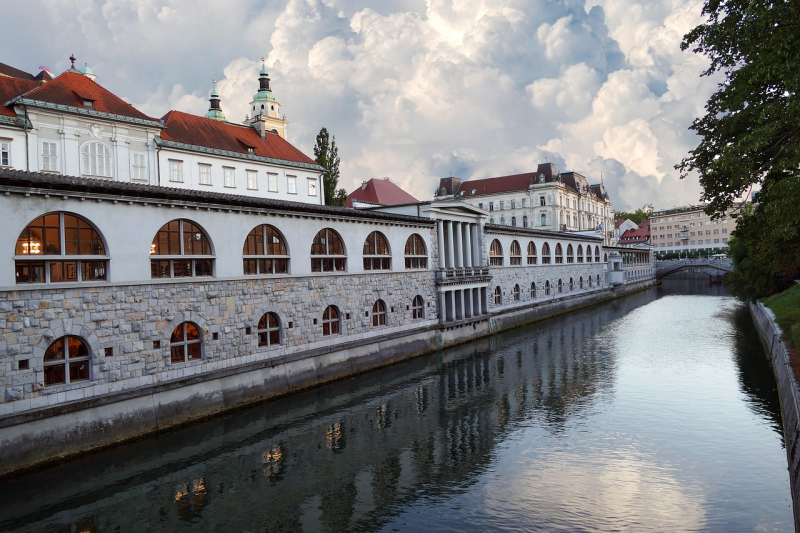
Photo by Mailai on Pixabay -
Olot, the capital of the Volcanic Region of Garrotxa, is a little town with only 35,000 residents. Olot, nicknamed as the City of Volcanoes for its location on a plain divided by the rivers Fluvià and Riudaura, is famed for being surrounded by volcanoes and is just a short stroll from the town's center. It is also the place to be mentioned when talking about the best art nouveau destinations in Europe.
Nonetheless, one of Olot's greatest draws is its abundance of Art Nouveau structures; in fact, the Garrotxa Area is home to so many of them that it has its own Art Nouveau road. The most exquisite Art Nouveau structure in Olot is House Gassiot, which was constructed by Alfred Paluzie between 1911 and 1912 and is situated on Carrer Sant Rafael. The statue by Rosendo Aubert that stands at the building's corner is its most prominent feature.
In 2000, the Solà Morales residence in Olot's Firal (marketplace) was included on the European Art Nouveau Trail. The first-floor balcony of the building is adorned with female figurines and plant patterns. It was constructed by architect Llus Domènech I Montaner between 1913 and 1916.
House Gaietà Vila is arguably the most striking structure in town due to its vivid hues. It was constructed in 1905 by architect Alfred Paluzie, who blended Modernism with Medievalism, in the Plaza del Rector Ferrer.Location: Spain
Video by Tom Medjugorje on Youtube 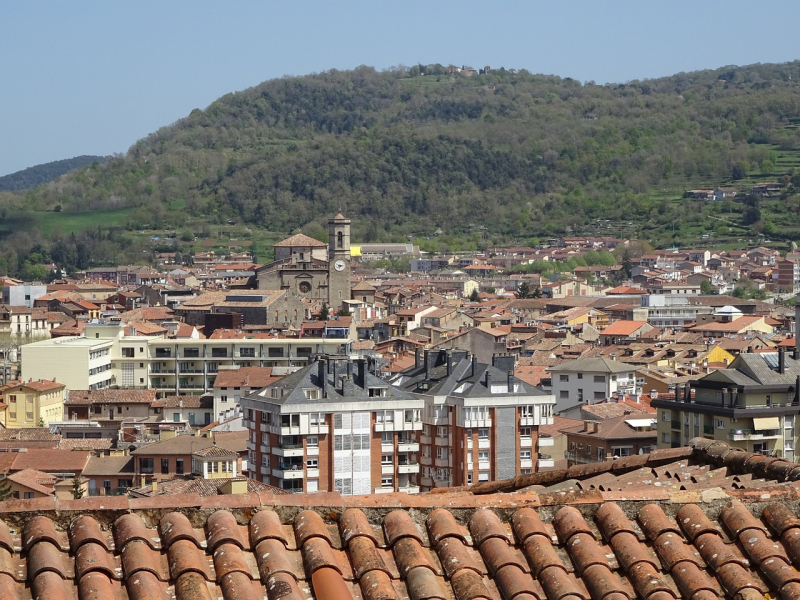
Photo by Photos_Marta on Pixabay -
The Romanian city of Oradea, which shares a border with Hungary, is home to a stunning example of Art Nouveau building that doesn't receive nearly enough recognition. The abundance of these structures in the city led to Oradea's inclusion on the 2012 Art Nouveau European Road. The Viennese school of Art Nouveau is evident in Oradea, largely because the city was growing quickly at the time (the early 20th century), when this region was a part of the Habsburg Empire, and renowned architects (such as Kálmán Rimanóczy Jr., Marcell Komor, or Franz Löbl) were brought in to build the much-needed spaces.
The Black Eagle Palace, which has lately undergone a stunning renovation, is the most remarkable art nouveau structure in Oradea (and the entire Transylvania region). This multipurpose area is divided into two equal sections on either side of a recognizable passageway. Thankfully, the area is accessible to tourists, who may stroll around it to take in its splendor.
The Adorjan Houses, Transylvania Hotel, La Roche House, Astoria Hotel, and Poynar Mansion are a few further significant Art Nouveau treasures. You can take a tour to learn about Oradea's Art Nouveau architecture, or you can explore the city on your own to find all the amazing structures.Location: Romania
Video by Vlad Claudiu Pruteanu on Youtube 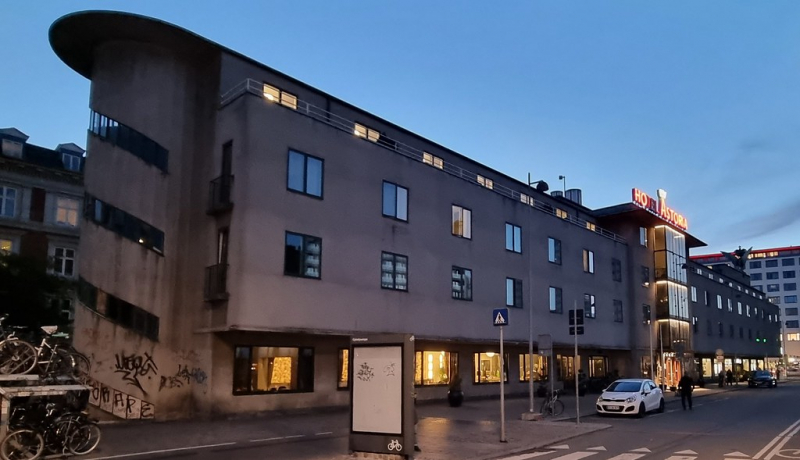
Photo by Steve Knight on Flickr ( https://www.flickr.com/photos/58415659@N00/52341976015 ) -
Art dealer Siegfried Bing launched the Art Nouveau architectural movement when he created a gallery named Maison de l'Art Nouveau, making Paris one of the first towns in Europe to adopt it. The trend became a representation of liberation from the stuffy, excessively regimented styles that were popular in the late 19th century. The Art Nouveau movement in Paris was distinguished by the use of unconventional materials like iron and glass, asymmetrical patterns, decorative motifs derived from nature or symbolic representations like urns, flowers, shells, or fruit, and organic forms that were more reminiscent of living things than artificial ones.
The Art Nouveau movement produced many well-known landmarks in France. Every visitor to Paris has seen the metro entrances, which are notable examples of Art Nouveau architecture created by Hector Guimard using wrought iron in a characteristic Art Nouveau style. A graduate of the École des Beaux-Arts in Paris, Hector Guimard (1867-1942) was a Lyon-born architect who won the 1898 competition for the best facade in Paris with Castel Beranger.
Many renowned structures in and around Paris have elements of the Art Nouveau style. Within the Grand Palais des Champs-Élysées, wrought iron is used in a similar manner. Fine examples of Art Nouveau can be seen in a number of department stores and businesses. An magnificent cupola in the Art Nouveau style can be found on the renowned department store Galeries Lafayette, which was designed by Georges Chedanne and Ferdinand Chanu. La Samaritaine, another building by Franz Jourdaine, is another example. The Musée d'Orsay, Musée des Arts Décoratifs, and Musée Carnavalet all have Art Nouveau furniture, paintings, jewelry, and glassware on display.
Location: FranceVideo by SERG PA Walker on Youtube Video by BinauraL StepS on Youtube -
The bourgeoisie adopted Art Nouveau as a way to flaunt their wealth in Portugal, where it is known as Arte Nova. Azulejo, a painted tin-glazed ceramic tile that is typically blue, was mixed in with Arte Nova, giving it a distinctive touch.
While there are other Arte Nova structures in Lisbon, there are two excellent examples in Porto, where visitors can also savor excellent cuisine, sip port wine, and take in the Douro River panorama from the well-known Luis I Bridge.
Along the Rua Santa Catarina, there is a historic café called Café Majestic (1921). It used to be known as Elite because it was a gathering place for intellectuals, creative types, and writers. The striking façade, which was first created by João Queiroz, commands attention. The interior is equally impressive. A marble countertop, long banquette made of red velvet and embossed leather, and intricately framed seats made of wood can all be found within.
Most people agree that Lello & Irmao (1906), one of the oldest, is the most stunning bookstore in the entire world. Xavier Esteves created the bookstore, which has a grand staircase in the middle and dark oak walls throughout. Neo-Gothic and Art Deco design elements are also present inside.Location: Portugal
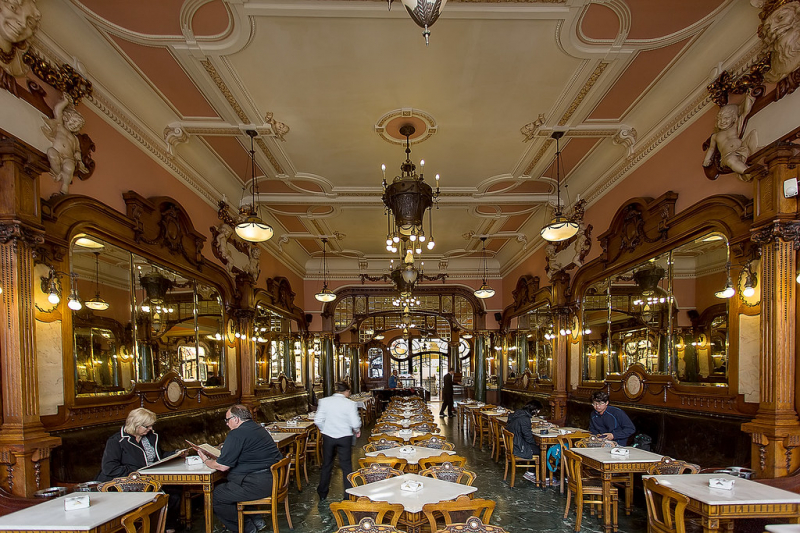
Phôt by José Moutinho on Flickr ( https://www.flickr.com/photos/jamoutinho/9421761927 ) Video by 57cosmos on Youtube -
Although Poznań is known for its goats, potatoes, and wonderful croissants, it also boasts a more affluent side. The area of town with the Art Nouveau buildings is quickly evolving into the cool part of town. There are many new eateries and cafes opening up, and this neighborhood is gaining well-deserved notoriety and appeal. Jeyce, a developing neighborhood, is situated in the city's western region.
Although the name Jeyce refers to a larger district, the Art Nouveau structures are primarily found close to the Rynek Jeycki neighborhood or the Old Town Market.
Start at the restaurant Klub Poludnie to experience the best of Jeyce. Buildings in the vicinity have discreet but lovely décor. The structure at number 4 on Roosevelt Street with the enormous ornamental sculpture is the best. The lady is holding flowers while the balconies in the background rise from ornate floral designs and vines.
This area's walk offers a wonderful village atmosphere because to the little enclosures and homes with gardens surrounding them. Before Poznań city consumed it, it used to be a village. Nonetheless, the most ornate structures are located close to the old market. While the market itself is quite unexceptional, a stroll along the main road shows many exquisite structures one after another. Jeyce should have at least half a day to discover the secret treasures. It is simple to combine wonderful historical architecture with delectable food because there are many excellent restaurants and cafes.Location: Poland
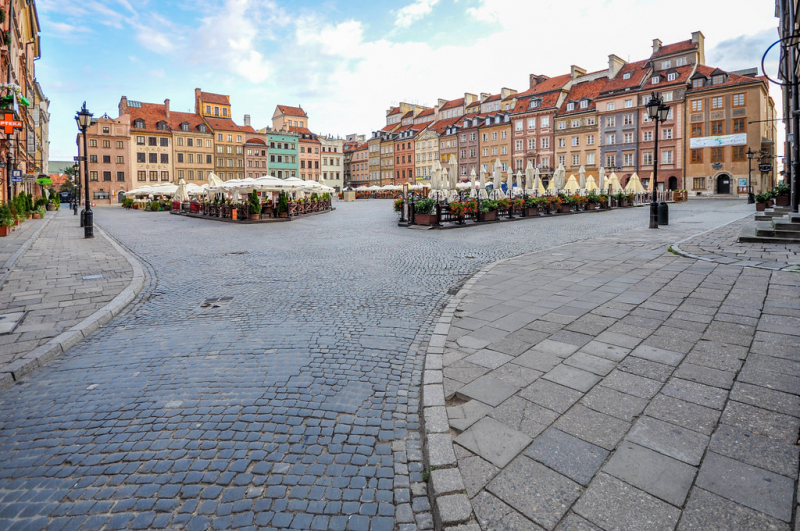
Photo by Jorge Láscar on Flickr ( https://www.flickr.com/photos/jlascar/9629660183 ) Video by Poland Daily Live on Youtube -
Paris and Brussels may have given birth to Art Nouveau, but Riga, the capital of Latvia, is the Mecca for anyone who loves the style's architecture because it is home to the greatest number of Art Nouveau structures in a single location. Riga was a rapidly expanding city at the turn of the 20th century, exposed to the newest influences in architecture that were displacing the eclecticism of the 19th century and introducing a new, more dynamic esthetic.
The best examples of Art Nouveau architecture in Riga can be found on Albert Street (Alberta iela), Elizabeth Street (Elizabetes iela), and Strēlnieku Street (Strēlnieku iela). Also in the Old Town, there are Art Nouveau buildings. One-third of all buildings in the city centre of Riga is in the Art Nouveau style. This is also one of the reasons why the Historic Centre of Riga is a UNESCO World Heritage Site.
You can also visit the Riga Art Nouveau Centre, which is housed in a lovely building from the period. Konstantins Peksens, a prominent Latvian architect, lived and worked in the flat where the museum is housed until 1907. Peksens' home was constructed in 1903 in the apartment complex on Alberta Street. Along with architecture student Eizens Laube at the time, Peksens and Laube created the structure.
Location: Latvia
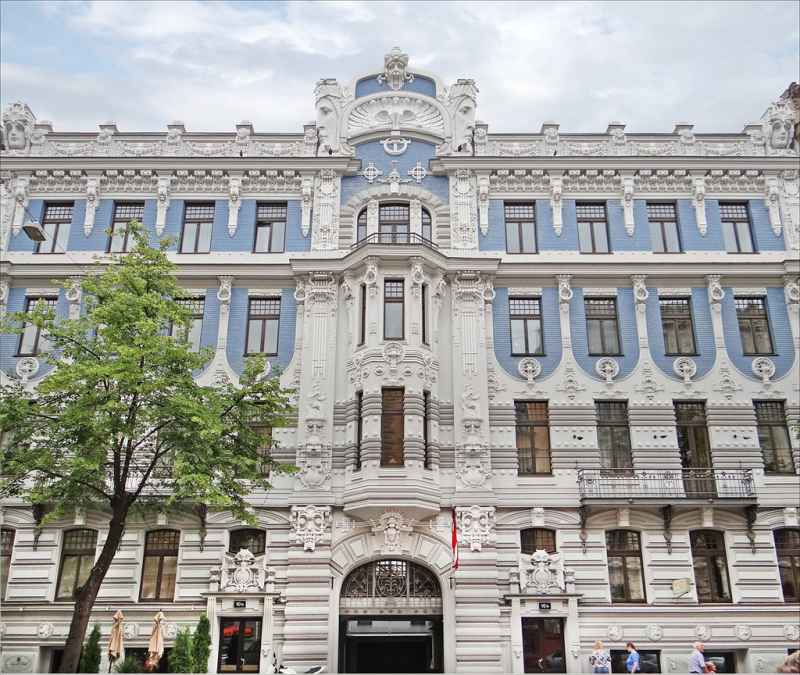
Photo by Jean-Pierre Dalbéra on Flickr ( https://www.flickr.com/photos/dalbera/7558512158 ) Video by travelguruTV on Youtube -
For anyone even vaguely interested in Art Nouveau, Subotica in Serbia is a must-visit destination. It is a well-known station on the Art Nouveau European Road but is still somewhat off the main path for many tourists. This tiny city is home to some of the finest specimens of Hungarian Secession architecture found anywhere in Europe, including the famous Ferenc Raichle's Palace, a private residence constructed in 1904 by a local movement leader.
Subotica is situated in Serbia's northern Vojvodina province, not far from the Hungarian border. It was a component of the Austro-Hungarian Empire and the Vienna Secession and the Hungarian Szecesszio movement both had a significant impact on the downtown area. Several of the city's most iconic structures are characterized by floral themes, natural lines, and timeless color schemes, and they frequently feature Zsolnay ceramic tiles. The City Hall and the primary bank are two of the more than a dozen structures that fall under the Art Nouveau category.
The Subotica Synagogue, which was constructed in 1902 and recently renovated, is arguably the most exquisite example. The first Secessionist structure in the city, it is said to be the only synagogue in Europe to feature Hungarian Art Nouveau characteristics. The interior is a work of art with stained glass, floral decorations, and vivid, fantasy-inspired colors.The easiest approach to learn about Subotica's architecture is to take one of the app-based, free audio tours produced by Visit Subotica. While you're there, make a quick detour to Palic Lake nearby, where you'll find a number of additional notable Art Nouveau structures, including the 1912 Women's Lido.
Location: Serbia
Video by Visit Subotica&Palić on Youtube Video by Penn Carnice on Youtube -
Tbilisi, the capital of Georgia, is home to some of the most stunning early 20th-century architectural treasures in addition to older and more contemporary structures. The majority of those Art Nouveau structures are dispersed around the city's central neighborhoods and are in critical need of repair.
This new modern architecture style was rapidly embraced by Georgian engineers and architects, who started building residential Art Nouveau buildings in 1902. The original structures are still standing today. Yet, Georgian Art Nouveau stands apart from the rest of the world because it incorporates regional and traditional features. Balcony made of wood with carvings. The Sololaki and Mtatsminda neighborhoods have the best examples of Art Nouveau architecture, but you'll need to train your eyes to see everything to avoid missing anything. They are frequently difficult to notice and in poor conditions. During the Communist Era, many buildings were whitewashed and therefore lost many details.
Besides having intricate facades, these residential houses have gorgeous hand-painted hallways. It was “fashionable” for the bourgeois family to have such entrance halls. It was a way of “showing off” back then. One such notable entrance hallway is on Tabidze 18, near Freedom Square.Tbilisi also has beautiful Art Nouveau-style buildings housing banks, hospitals, maternity homes, a pawnshop, a greenhouse, and a library, to name a few things in addition to the private dwellings. So now might be a good time to visit Tbilisi if you've been wanting to look for lesser-known Art Nouveau buildings.
Location: Georgia
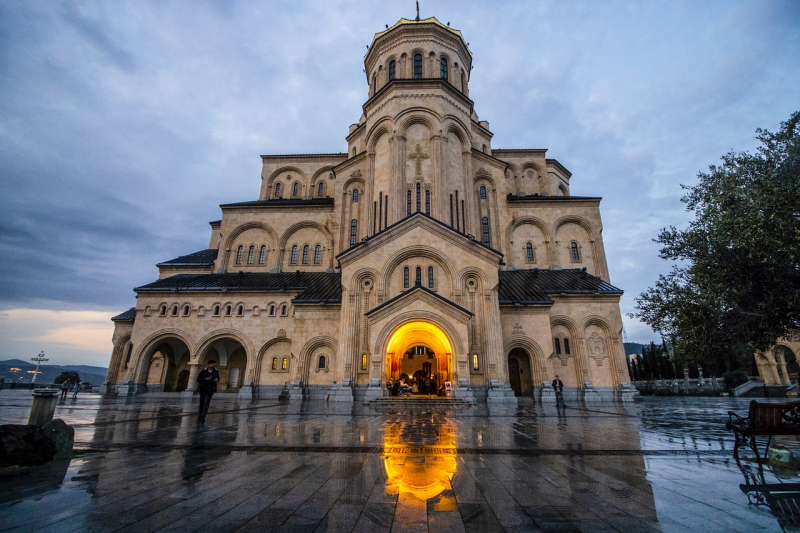
Photo by Mostafa_Meraji on Pixabay Video by Fady Younan on Youtube

















